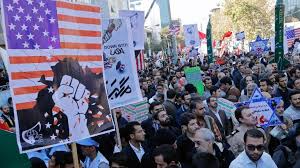What has shaped US-Iran ties over the decades?

The relationship between the United States and Iran has been one of the most complex and contentious in modern international politics. From strategic alliance to bitter enmity, their ties have been shaped by a mix of historical events, ideological clashes, and geopolitical rivalries. Understanding how this relationship evolved provides crucial insight into one of the world’s most enduring diplomatic standoffs.
A Strategic Alliance Turned Sour
In the early 20th century, Iran, then under the rule of the Qajar dynasty and later the Pahlavi monarchy, attracted interest from Western powers due to its vast oil reserves. By the mid-20th century, the United States had developed close ties with Iran, especially after World War II, viewing it as a vital ally in the fight against Soviet expansion during the Cold War.
However, the turning point came in 1953, when the U.S. Central Intelligence Agency (CIA), in cooperation with British intelligence, orchestrated a coup against Iran’s democratically elected Prime Minister, Mohammad Mossadegh. Mossadegh had moved to nationalize Iran’s oil industry, challenging British and Western control. The coup reinstalled the Shah, Mohammad Reza Pahlavi, whose increasingly autocratic rule and close alignment with the West sowed seeds of long-term resentment.
The 1979 Revolution: A Complete Reset
The biggest rupture in U.S.-Iran ties came in 1979, when a popular uprising led by Ayatollah Ruhollah Khomeini overthrew the Shah and established the Islamic Republic of Iran. The revolution was not just political—it was deeply ideological, rejecting Western influence and promoting a theocratic model of governance based on Shia Islam.
Soon after the revolution, Iranian students seized the U.S. Embassy in Tehran, taking 52 American diplomats and citizens hostage for 444 days. The hostage crisis dominated U.S. media, ruined diplomatic relations, and triggered widespread anger in the United States. It also marked the formal beginning of Iran’s transformation into one of America’s most vocal and persistent adversaries.
The 1980s: War and Proxy Conflicts
Throughout the 1980s, U.S.-Iran tensions remained high. The U.S. supported Saddam Hussein’s Iraq during the Iran-Iraq War (1980–1988), providing military and intelligence aid to Baghdad. Iran, on the other hand, used proxy militias and revolutionary rhetoric to extend its influence across the Middle East, particularly in Lebanon and later in Syria.
In 1988, U.S.-Iran relations hit another low when an American warship, the USS Vincennes, shot down Iran Air Flight 655, killing all 290 civilians on board. Though the U.S. called it a tragic mistake, Iranians saw it as further proof of American aggression.
Sanctions and Isolation in the 1990s and 2000s
The 1990s and 2000s were marked by continued U.S. sanctions on Iran, targeting its economy, military capabilities, and oil exports. Washington accused Tehran of sponsoring terrorism, repressing human rights, and, most importantly, developing nuclear weapons under the guise of a peaceful energy program.
President George W. Bush further escalated tensions in 2002, when he labeled Iran as part of the “Axis of Evil,” alongside Iraq and North Korea. This rhetoric pushed Iran further into diplomatic isolation, even as it continued to expand its regional influence through groups like Hezbollah in Lebanon and later involvement in Iraq after the fall of Saddam Hussein.
The 2015 Nuclear Deal: A Moment of Hope
After years of negotiations, a major diplomatic breakthrough occurred in 2015 with the signing of the Joint Comprehensive Plan of Action (JCPOA). Under this deal, Iran agreed to limit its nuclear enrichment activities and allow international inspections in exchange for relief from economic sanctions. The agreement, brokered by the U.S., European Union, Russia, and China, offered a rare glimpse of cooperation and de-escalation.
However, critics in the U.S., particularly conservatives and allies like Israel, believed the deal didn’t go far enough in curbing Iran’s long-term ambitions or its support for armed groups. Still, the JCPOA remained a high point in post-revolution U.S.-Iran diplomacy.
Trump’s Withdrawal and the Return of Maximum Pressure
In 2018, President Donald Trump unilaterally withdrew from the JCPOA, calling it a “terrible deal.” His administration reimposed harsh sanctions on Iran under a “maximum pressure” campaign aimed at bringing Tehran back to the negotiating table on tougher terms.
The Iranian economy, already fragile, suffered under renewed sanctions. In response, Iran resumed nuclear enrichment activities, attacked oil tankers in the Persian Gulf, and ramped up its regional military activity. Tensions reached a boiling point in January 2020, when a U.S. drone strike killed General Qassem Soleimani, one of Iran’s most powerful military leaders. Iran retaliated with missile strikes on U.S. bases in Iraq, though full-scale war was narrowly avoided.
Biden Era and Stalled Diplomacy
President Joe Biden pledged to revive the nuclear deal, but talks have been slow and inconclusive. Iran has demanded the full lifting of sanctions first, while the U.S. insists on broader terms, including limits on Iran’s missile program and regional activities.
Meanwhile, Iran has made significant advances in its nuclear technology, reducing the “breakout time” it would need to develop a nuclear weapon. In the region, Iran continues to exert influence through proxy groups in Lebanon, Syria, Iraq, and Yemen—often in direct opposition to U.S. allies.
What Lies Ahead?
The U.S.-Iran relationship remains stuck in a cycle of mistrust and escalation. Each side views the other as a destabilizing force. Iran sees the U.S. as an imperialist power bent on undermining its sovereignty, while Washington views Iran as a sponsor of terror and a nuclear threat.
There is no easy path forward. Diplomacy remains the most viable option, but success requires rebuilding trust and addressing not just nuclear concerns, but the broader geopolitical and ideological gulf between the two nations.
Conclusion
From the 1953 coup to the 1979 revolution, from nuclear negotiations to proxy wars, the U.S.-Iran relationship has been shaped by decades of upheaval, mistrust, and missed opportunities. While peace is not impossible, it will demand bold leadership, mutual concessions, and a commitment to long-term dialogue—a tall order, but not out of reach.






